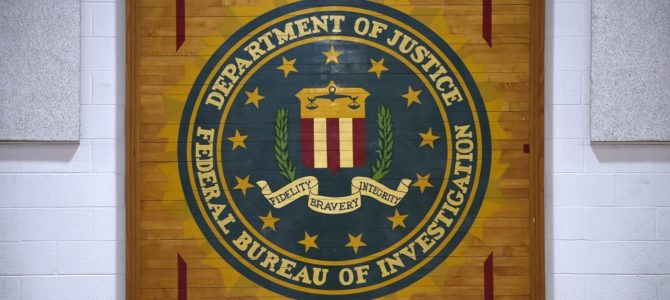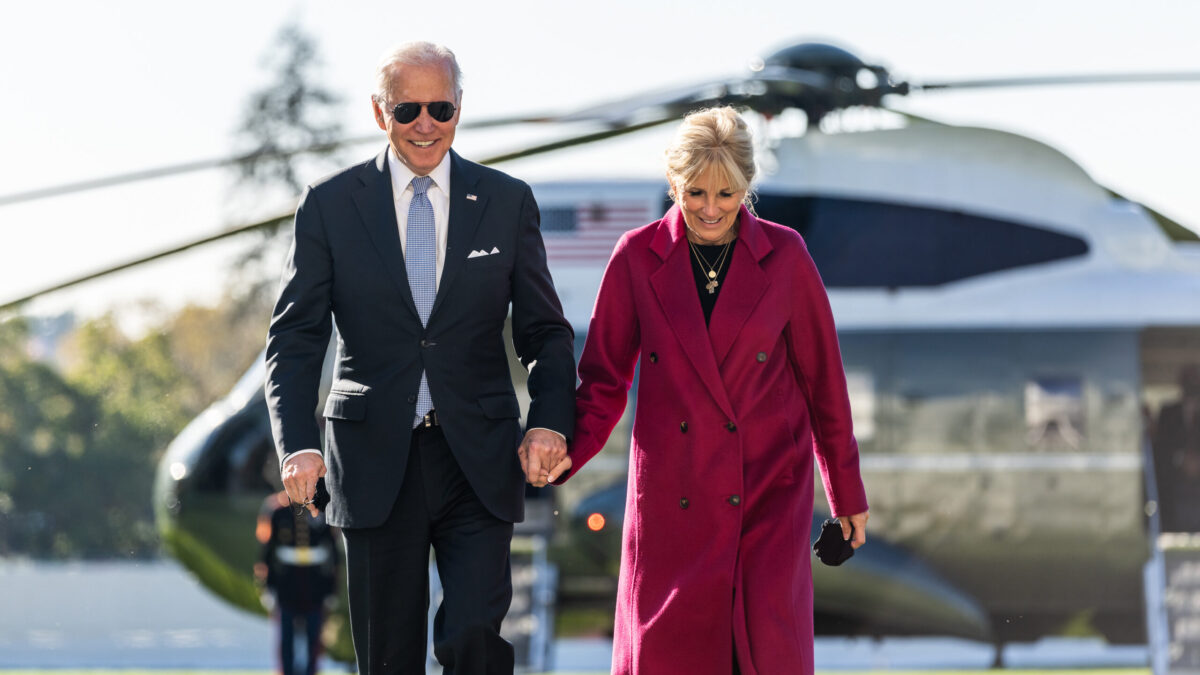
In a Friday afternoon news dump, the Federal Bureau of Investigation released 71 pages of documents related to the agency’s use of Christopher Steele as a confidential human source (CHS). Judicial Watch fought for more than a year to force the government to comply with its Freedom of Information Act (FOIA) request for documents related to the work the former British spy—and author of the salacious and unverified Steele dossier—did for the FBI since January 1, 2016.
It is unlikely that Friday’s release will end the matter, however, given the FBI’s greedy use of FOIA exemptions left nearly all the significant details redacted. But while Judicial Watch (and Congress!) continue to battle for more information, several points merit mention based on the sparse details revealed.
1. Was Christopher Steele an FBI Spy Against Trump?

The most interesting revelation appeared on the final page of the release, which consisted of a “CHS admonishment” dated February 2, 2016. “Admonishment,” though, does not mean reprimand, as a lay person might think. Rather, under the Attorney General Guidelines (AGG) governing the use of confidential human sources, the FBI must, “at the opening and thereafter at least annually or more often if circumstances warrant, . . .advise the CHS of all applicable instructions detailed in the manual.” The FBI calls these instructions admonishments.

The question raised, then, is whether the July 2, 2016, admonishment was “warranted” by “circumstances” related to the FBI’s decision to use Steele as a CHS in its investigation of the Trump campaign, or merely constituted the annual admonishment required under the AGG CHS guidelines.
The FBI reportedly used Steele as a CHS previously. In 2010, he “deliver[ed] information about FIFA to the FBI that eventually led to indictments of many current and former officials of the soccer governing body.” The admonishment from 2016 may merely be the yearly re-upping of Steele’s already-opened CHS status.
However, it is impossible to tell which is true from the FOIA release. The DOJ not only redacted much of the content, but also withheld eight pages entirely, including the two pages immediately preceding the February admonishment. It stated that “[t]he signed CHS AGG admonishments form is attached to this EC as a 1A,” meaning the DOJ withheld that entire document for some reason.
If the redacted February 2, 2016, admonishment and withheld AGG admonishments indicate the FBI intended to use Steele to spy on the Trump campaign, that would be significant because the FBI has long maintained that it did not launch that probe—christened Crossfire Hurricane—until July 2017. Of course, evidence has already established that, even before the official launch of Crossfire Hurricane, the FBI dispatched other informants to spy on the Trump campaign.
2. Did the FBI Pay Steele for Crossfire Hurricane Spying?
The heavily redacted documents also leave unanswered the question of whether the FBI paid Steele for being a CHS in the Crossfire Hurricane investigation. The FOIA response included approximately 20 payment request forms for Steele, but the details remain redacted.
Although the media reported that sources with “knowledge of the arrangement” claim the FBI never paid Steele for his work on the dossier, but may have reimbursed him for expenses, the FBI has yet to confirm the accuracy of those reports. Whether the FBI compensated Steele or merely paid his expenses, though, is a distinction without a difference, especially if Steele had already received reimbursement for the same expenses under his contract with Fusion GPS. The Obama administration should never have paid Steele to obtain dirt on Trump.
The number of payment request forms (and payment receipts) submitted since January 1, 2016 also creates the appearance of a CHS heavily involved in work with the FBI. The work in 2016 could have been related to other matters, such as the FIFA case, although arrests in that case came in May 2015, leaving one to wonder how much need there was to pay Steele for that investigation. But until the FBI fesses up, or the DOJ releases more details, we won’t know the answer to this question.
3. After FBI Officially Axed Him, Steele Kept Feeding Them Info
A third detail that jumped out from among the blank pages concerned Steele’s termination as a CHS. A “Source Closing Communication” form documented the FBI’s decision to close Steele as a CHS because he revealed his status as a confidential source.
The form included these additional details: “CHS confirmed to an outside third party that CHS has a confidential relationship with the FBI. CHS was used as a source for an online article. In the article, CHS revealed CHS’ relationship with the FBI as well as information that CHS obtained and provided to FBI. On November 1, 2016, CHS confirmed all of this to the handling agent. At that time, handling agent advised CHS that the nature of the relationship between the FBI and CHS would change completely and that it was unlikely that the FBI would continue a relationship with the CHS.”

Significantly, the Source Closing Communication then noted that the “handling agent advised that CHS was not to operate to obtain any intelligence whatsoever on behalf of the FBI.” But as The Weekly Standard ’s Eric Felten recently detailed, after the FBI terminated its relationship with Steele, Steele found a work-around in Bruce Ohr.
Ohr, a senior Department of Justice official, is married to Nellie Ohr. Nellie worked at Fusion GPS with Steele on the dossier. Bruce Ohr met numerous times with Steele, then “Ohr passed the details of his conversations with Steele on to the FBI.”
Ohr spoke with the FBI a dozen or so times, beginning on November 22, 2016 and ending in late May 2017, and, as Felten reported, those meetings “were formal FBI interviews, each subsequently written up in a ‘302’ summary memo.” So, it appears that Steele was not the only one to ignore the FBI’s November 2, 2016, directive that he “was not to operate to obtain any intelligence whatsoever on behalf of the FBI.” FBI officials did as well.
4. The State Department Has a File on Steele?
The final interesting tidbit from Friday’s release comes from a parenthetical on page one’s summary of the eight pages withheld, including one withheld “per FBI and US Department of State.” The DOJ’s proffered reason for withholding that page is FOIA exemption “b6-1, 4,” which permits the government to withhold all information about individuals in “personnel and medical files and similar files” when the disclosure of such information “would constitute a clearly unwarranted invasion of personal privacy.”

What personnel, medical, or similar file does the State Department have on Steele? And why?
There may well be an innocuous reason for the State Department to have a file on Steele (or an interest in Steele’s FBI file). However, given the recently revealed secret meeting between Steele and State Department officials in October 2016, and the “‘major irregularities’ in how the State Department handled unspecified information used in the Russia investigation,” this notation deserves an explanation.
Unfortunately, each new document dump, instead of providing an explanation to the American public for the DOJ, FBI, and State Department’s investigation into the Trump campaign, raises more questions and more concerns. It’s well past time to move on to the answers.









